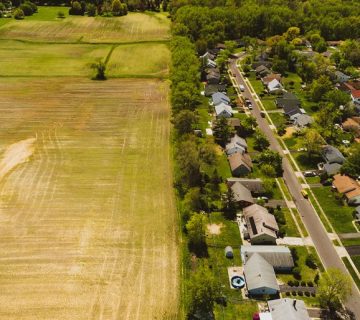A land survey is an essential piece of documentation for anyone intending to buy or develop a piece of land. There is no way around it. Any land developer or land purchaser should have a current survey of any piece of land they own or are considering buying. Let’s delve a little further into the importance of land surveys.
What a Land Survey Should Contain at a Minimum
A land survey is a detailed description of any piece of property. It is a requirement for:
- Obtaining the title
- Land development purposes
At a minimum, a land survey must include:
- The measurements indicating the property boundaries
- Details of any features on the property – this might include:
- Buildings
- Driveways
- Fences
- Trees, stumps
- Encroachments of any kind
- Legal appurtenances, such as
- Easements
- Adverse possession
- Rights of way
The surveyor, as part of their work, also evaluates local regulations which may apply to the property in question, zoning, the presence of wetlands, and the placement of corner markers for future reference or evaluation.
You can see how valuable and necessary a proper survey becomes when evaluating a property. Here are definitions of some of the terms we’ve just mentioned:
Encroachment – this term refers to the building on or use of the land adjacent to one’s own property. The survey will help determine if any encroachments are present on the land you are looking at purchasing, for example. It’s actually a type of trespassing, and a proper survey will confirm whether or not an encroachment exists.
Adverse possession – this is the term given to a property that has been taken over by someone other than the rightful owner, without any payment or permission. You want to stay away from, or at the very least, be very aware of situations like this; the survey will help identify if any exist.
Easement – allows for someone to enter onto a piece of real estate, which they don’t own, for a specific purpose. A very common use of easements is for municipalities to gain access to infrastructure, such as telephone poles, etc.
Right-of-way – this is actually a type of easement. A right-of-way allows for travel across a property, to get from one location to another. Different types of right of way include:
- Public easement
- Private easement
- Easement by necessity
It’s good to know if any of these exist on a property you are considering – a survey will identify them and the exact details about them.
Land Surveys Will Tell You a Lot About a Property
It’s more than just about the boundaries and edges of a property – although it is in your best interest to have that information verified via a land survey. In addition, a survey will detail the property’s topography, which becomes vital if you intend on building on it.
You will need a land survey if you are looking at a project that requires a planning permit. It will be used by whatever regulating agency is involved in evaluating zoning requirements, the intended land use, and other planning documents.
We’d be happy to discuss any questions you may have regarding land surveys. Contact our team today.



